A World Physical Map is a detailed representation of the Earth’s natural landscape features, revealing the planet’s physical geography. Unlike political maps that divide up different countries and their borders across various provinces, physical maps show where land masses are located about one another, the distances between them, and their size relative to one another on their surface.
Related Post:
- Political Map of Europe
- Africa Political Map
- Political Map of Antarctica
- Asia Political Map
- Political Map of North America
- World Political Map
Free World Physical Map
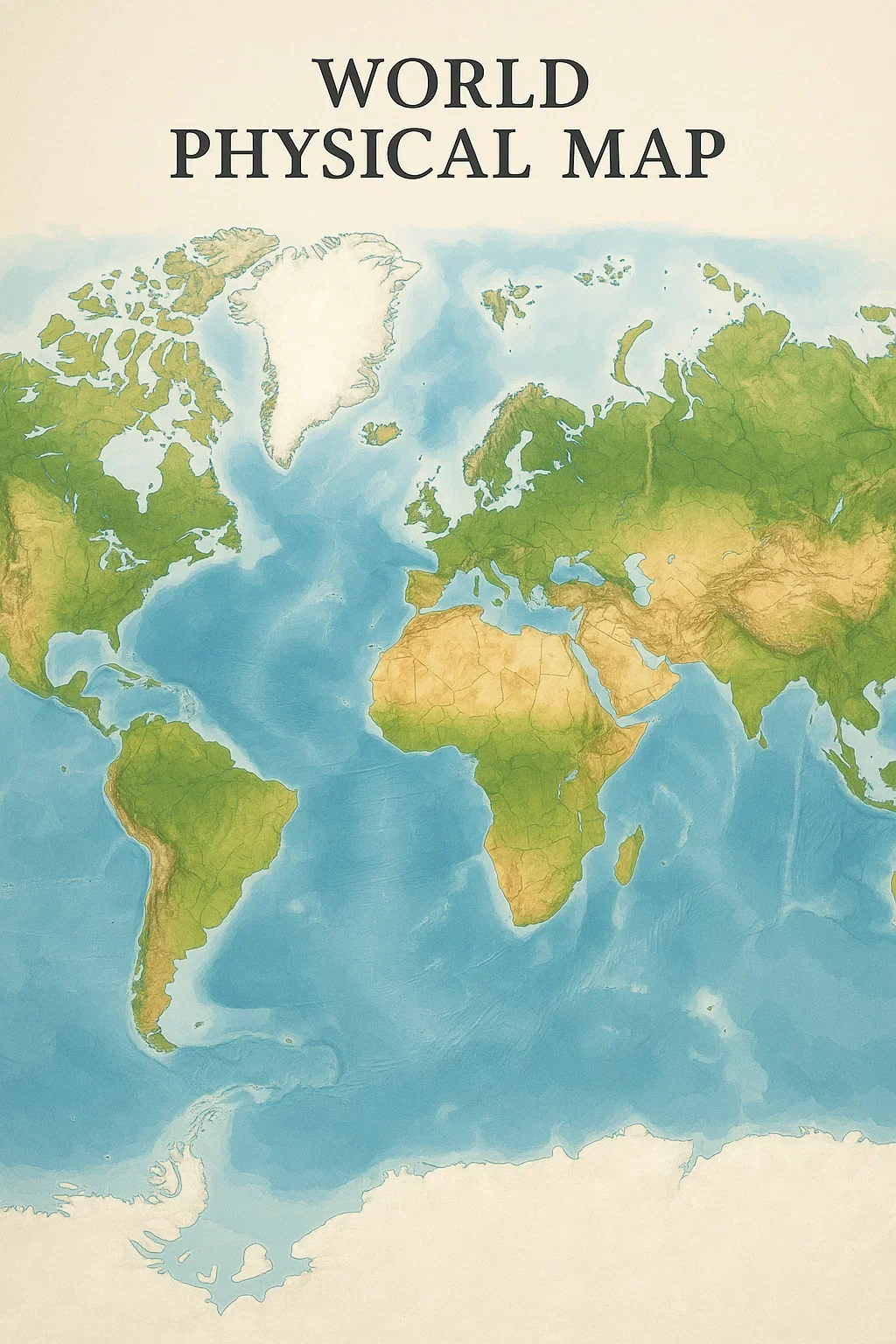
Such maps let us see what the Earth looks like: mountains, valleys, plains, deserts, rivers, and lakes. As flat representational adaptations of the three-dimensional globe, they give us a picture that words alone cannot adequately convey. In this way, we may better appreciate our world!
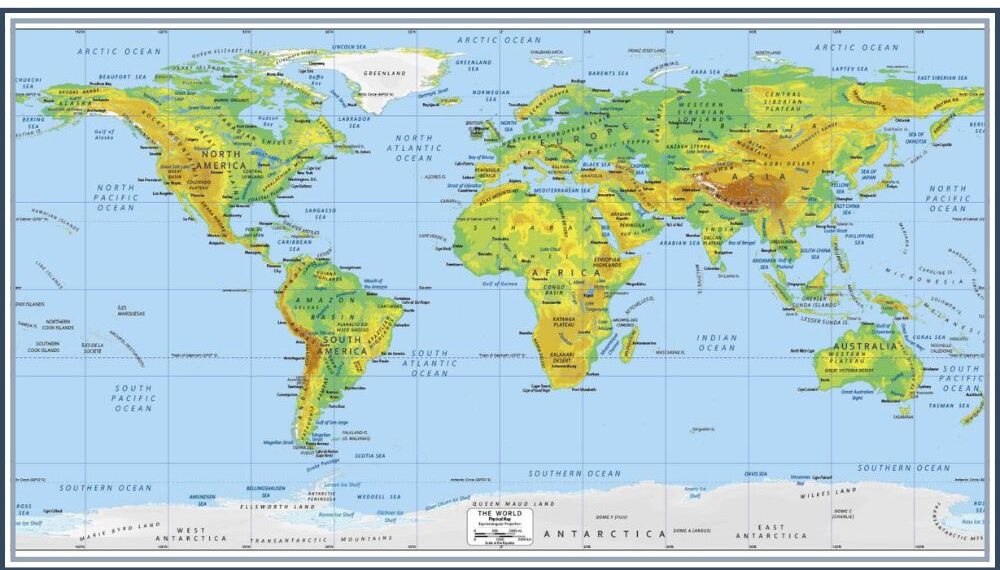
These maps provide us with one view of all the Earth’s landforms and help us realize just where different physical features are distributed across continents and oceans. By the highest mountain ranges, the Himalayas, Andes, and Rockies; by major rivers like the Nile, Amazon, and Yangtze, they are notated plainly.
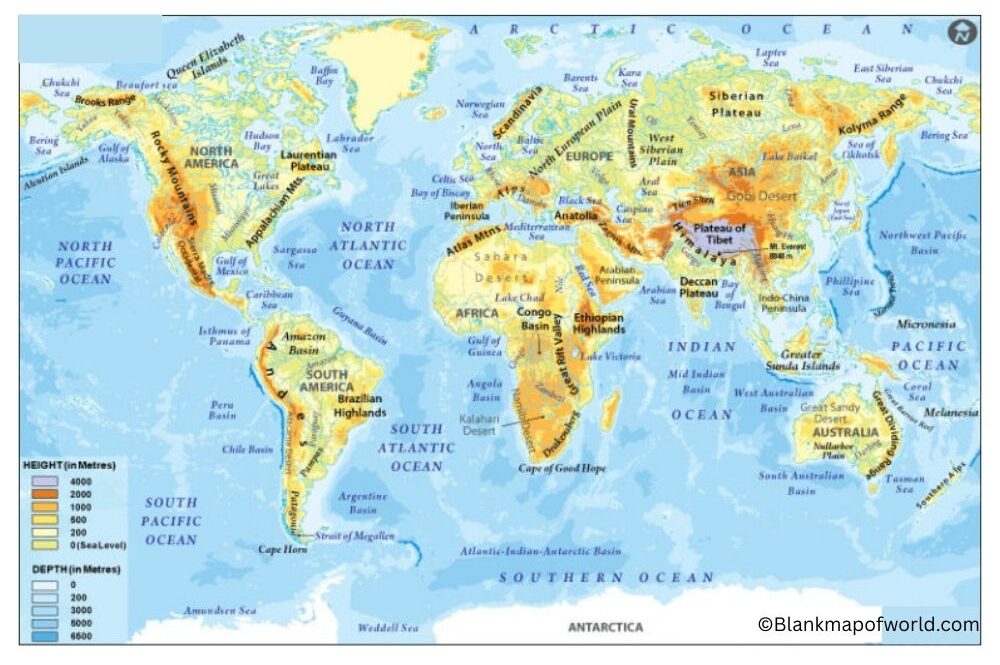
A physical map of the world shows the Earth’s natural features of mountains, rivers, deserts, and oceans. In contrast with political maps, on this type of map, attention is given to topography rather than borders or cities. Using color gradients and shading, these maps show elevations (height above sea level) and types of land formation. In broad terms, this helps them understand the general nature of different regions.
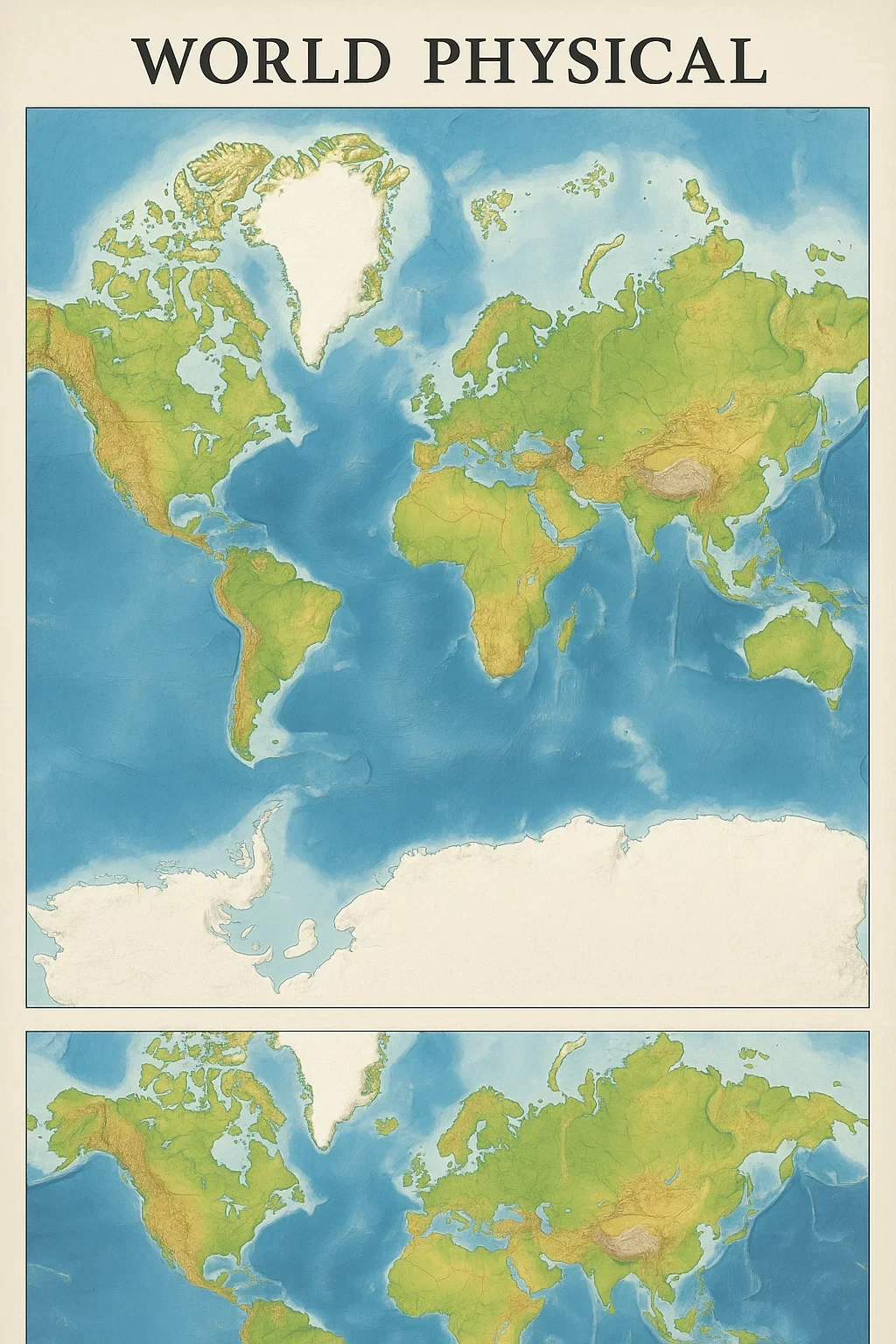
From a world map, you can see significant physical features such as the Himalayas, the Amazon River, and the Sahara Desert. World physical maps are necessary for studying geography, climate conditions, and natural processes. They give a global perspective on the surface of the Earth, and are therefore of great help to teachers, students, researchers, or anyone else who wants environmental information in English.
Physical Map of the World
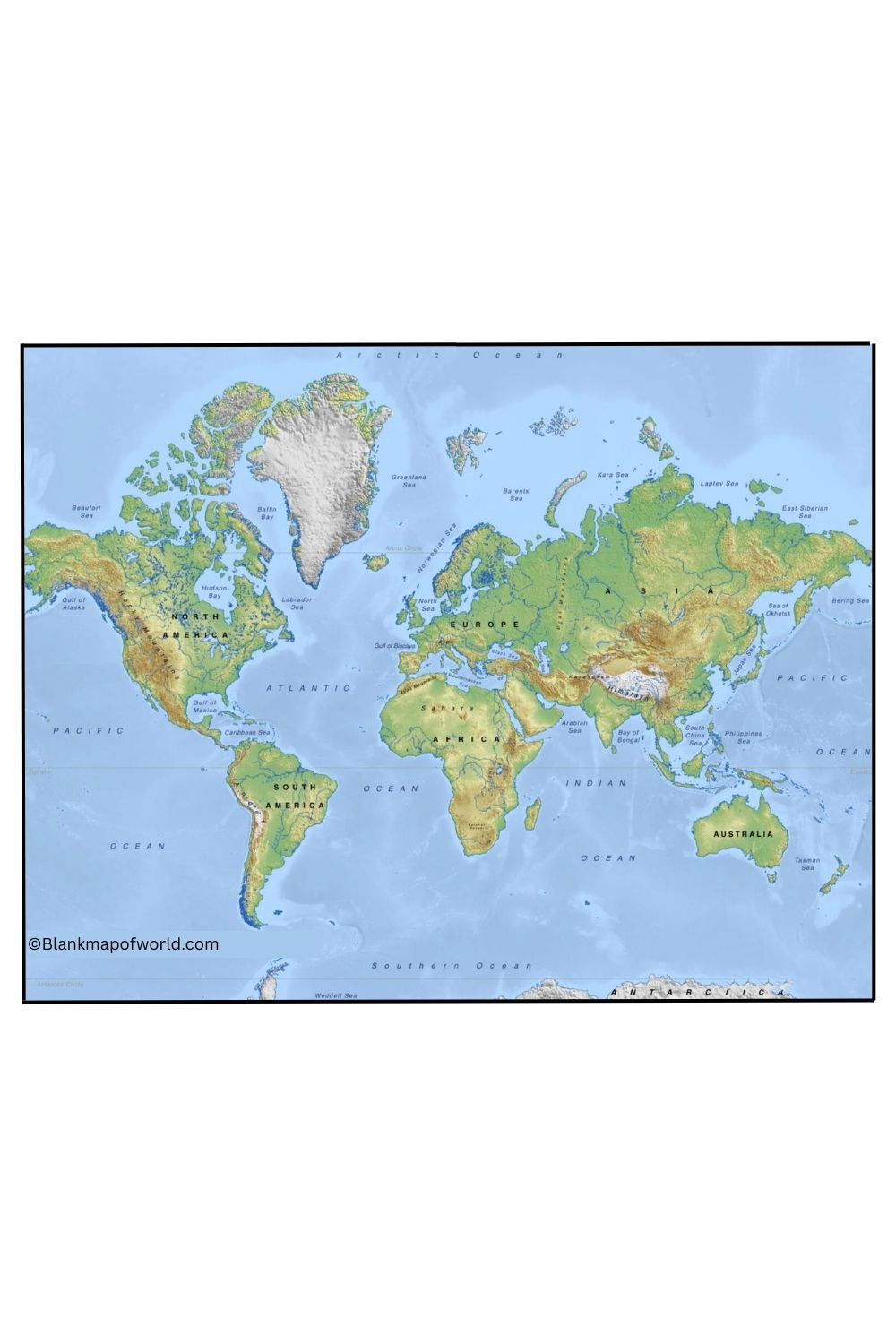
This Physical Map of the World Worksheet was created to give a visual description of the natural features of Earth Act it serves as an educational tool that helps people understand the Earth’s diverse topography, with such sights as the Himalayas and Sahara Desert where even major river valleys such as those of the Nile and Amazon feature prominently on this map.
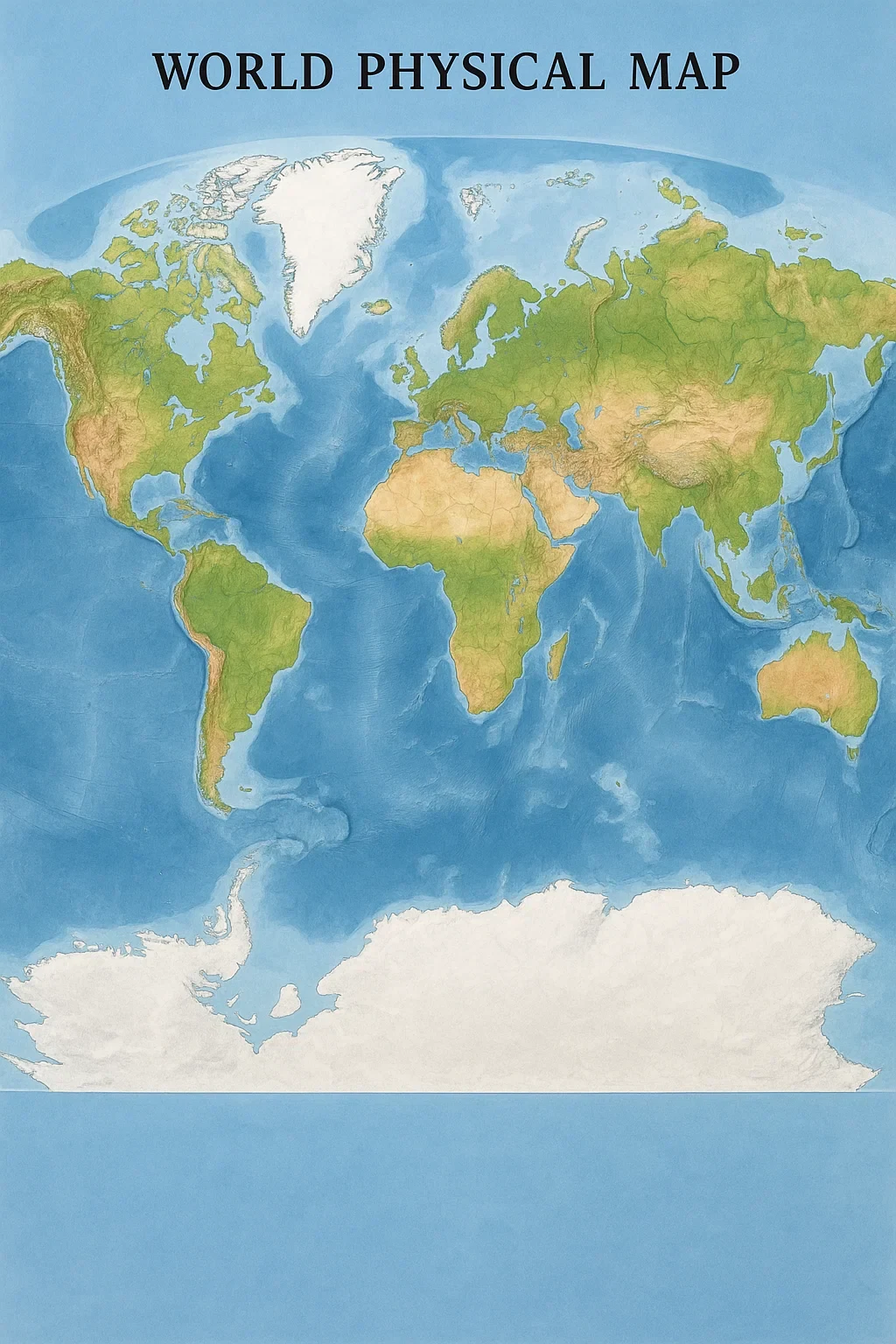
A color gradient is used to show elevation, with more somber shades indicating higher areas and lighter shades meaning lower parts. It also shows solid lines on the map to demarcate country boundaries as a guide. This worksheet enables students and researchers to learn more about physical geography, improve their understanding of the natural landscapes found on our entire planet, and how these traits shape climate, ecosystems, and human work.
World Map with Countries’ Physical
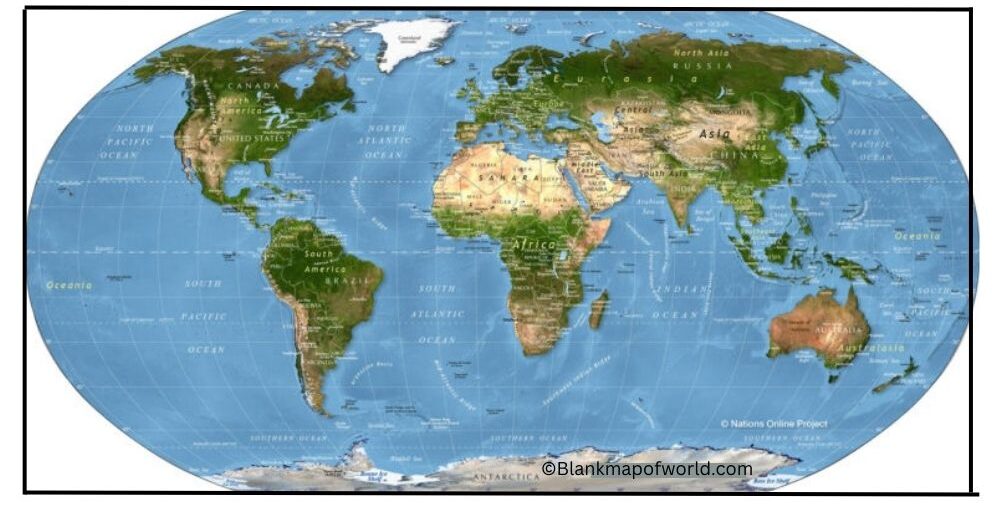
Physical Web Map of the World illustrates the countries and the natural components of the Earth, such as the positions of mountains, rivers, deserts, forests, and oceans. It has various colors, which give it easy time to see the high areas, low lands, and depth of water. As a case in point, mountains such as the Himalaya or the Rockies take brown or gray, flat land takes green, and oceans take blue.
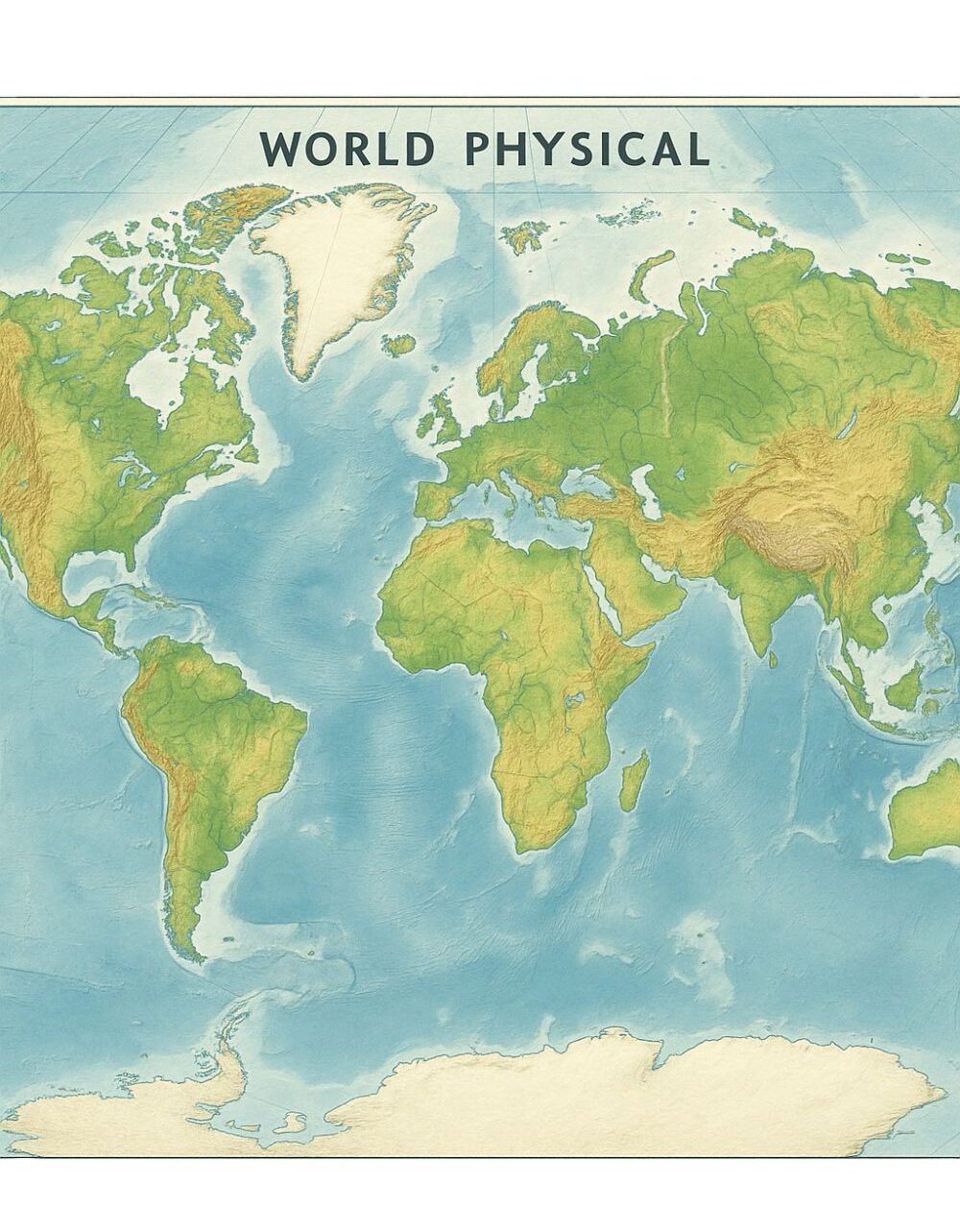
An outline world physical map of Earth’s land echoes its main natural features, including geographic landforms such as rivers and mountains or deserts, a nd national boundaries, unlike political maps, are not marked except in the most minimal way. The map outlines key features like the Rocky Mountains, the Andes, and the Great Barrier Reef, along with major rivers like the Nile and Amazon.
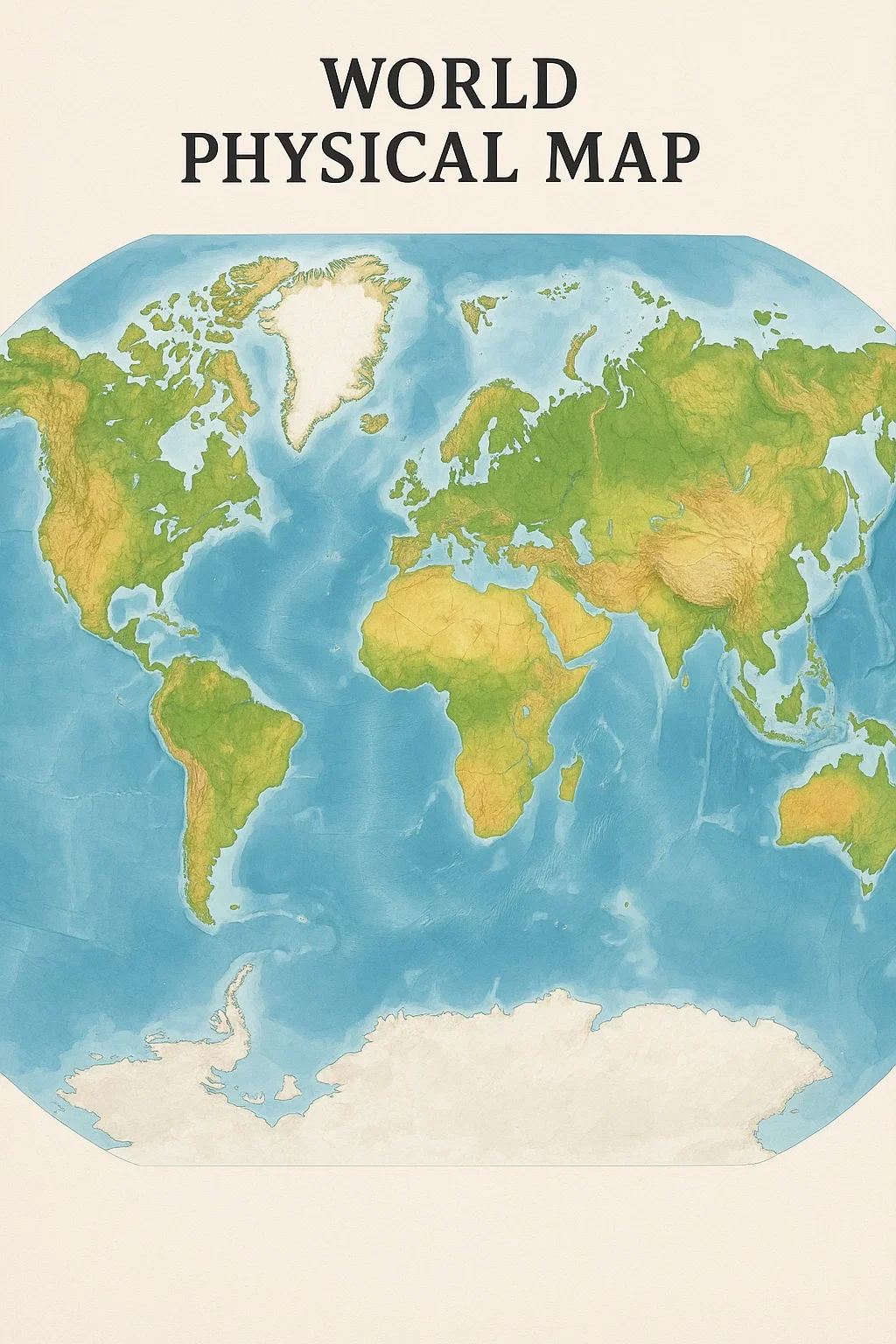
It resembles a picture of the world where one sees the locations of countries as well as the appearance of the land. Such a map is effectively used to learn, travel, or just geographically explore the shape of our world.
Labeled Physical Map of the World
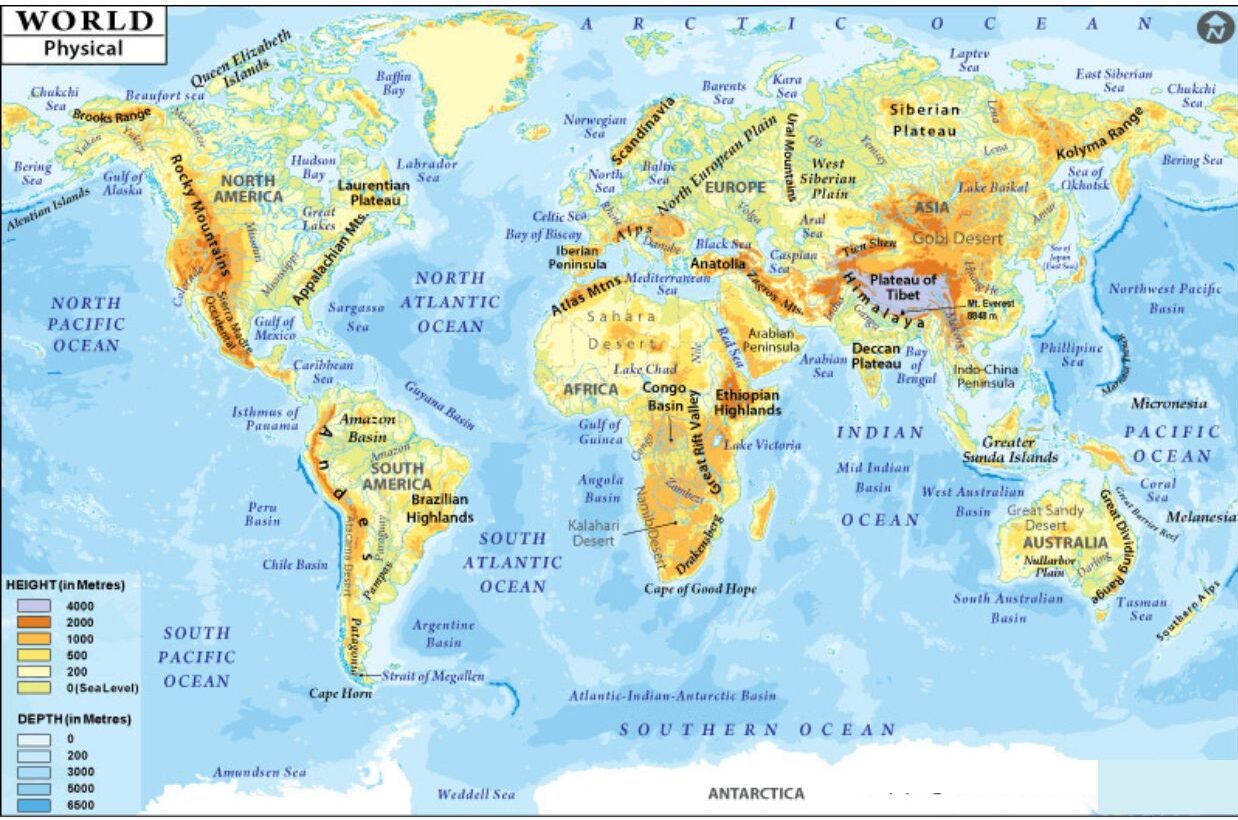
A labeled physical map of the world provides a clear picture of the natural landscape of the Earth. It throws light on continents, oceans, major mountain ranges (eg Himalayas and the Rockies), huge deserts (such as the Sahara), important rivers (eg Neel and the Amazon), and large lakes. All major geographical sites are designated, making it easier to identify their global locations. This map is an important resource for learning about the diverse topography and physical geography of the Earth.
![Blank Map of World [Free Printable Maps]](https://blankmapofworld.com/wp-content/uploads/2025/05/blank-map-logo-1.png)